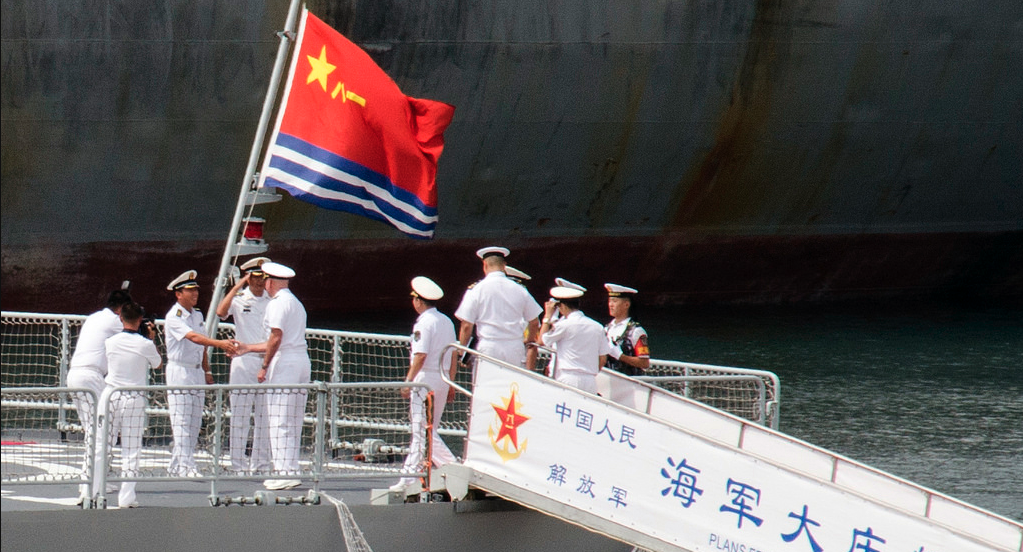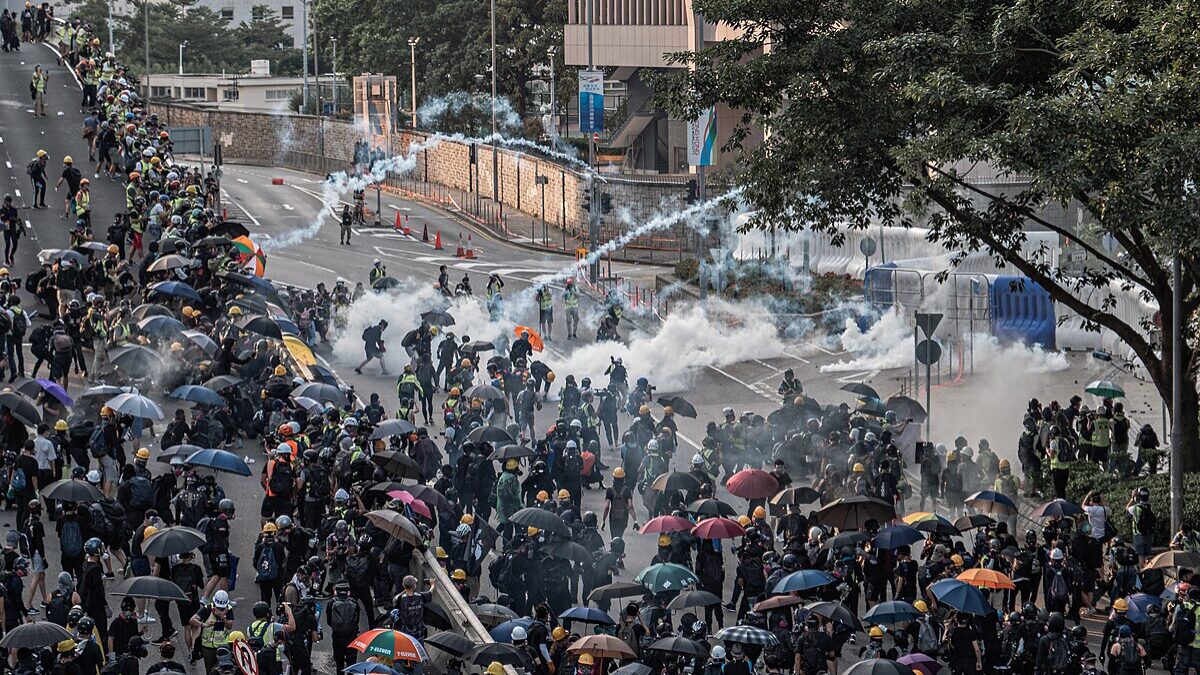As America, and much of the world, remains focused on conflicts in Europe and the Middle East, the People’s Republic of China (PRC) continues to ramp up its bellicose actions in the South China Sea and in the waters and airspace around Taiwan.
The PRC’s use of water cannons — capable of inflicting fatal injuries — against Philippine resupply vessels seeking to reach a Philippine outpost in Philippine waters; engaging in dangerous maneuvers at sea and in the air; and aggressively employing “gray-zone” tactics with hundreds of maritime militia boats, the PRC is aiming to wear down its opponents short of open warfare.
It might be working.
The most recent incident adding to the litany of dangerous Chinese provocations involves the use of sonar by a Chinese warship against Australian Navy divers. The divers, clearing fishing nets from the HMAS Toowoomba’s propellers in international waters, were subjected to sonar pulses from a nearby Chinese destroyer, causing minor injuries. Despite the Chinese warship being warned about the divers, the Chinese vessel continued to aim its sonar pulses at the divers, an action labeled as “unsafe and unprofessional” by Australian officials.
Even so, left-wing Australian Prime Minister Anthony Albanese declined to raise the incident with paramount leader Xi Jinping, raising questions about Australia’s non-existent diplomatic response to China’s actions.
A One-Sided Summit in San Francisco
In the meantime, as the PRC continues its aggression in the physical world, its diplomatic efforts spin a different narrative.
During Chinese Communist Party Chairman Xi Jinping’s recent visit to San Francisco, he scored some points at very little cost. China agreed to restore military-to-military talks that benefit their military more than America’s, promised to crack down on fentanyl precursor shipments (where have we heard this before?), granted Mastercard approval of a joint venture to process payments in China, and restarted direct flights between Washington, D.C., and Beijing this week, the first time since the Covid-19 pandemic. For this, Xi was able to get full decoupling off the table for his struggling economy.
Importantly, Xi also said Beijing does not have plans for an invasion of Taiwan.
But in 2015, Xi promised President Barack Obama that “China does not intend to pursue militarization” of the South China Sea. A year later, that promise was shown to be a lie. This is a red flag for Taiwan.
In the meantime, in the South China Sea — a region claimed by China with a ridiculous Nine-Dash Line map dating, ironically enough, to Chiang Kai-Shek’s Nationalists in 1933 — the illegal Chinese claims stretch more than 700 nautical miles from Chinese territory, bumping up and over the sovereign waters of the Philippines, Vietnam, Malaysia, Indonesia, and Brunei.
But, as George Costanza said on “Seinfeld,” “It’s not a lie if you believe it.” And in the meantime, the provocations will continue until war ensues.
China’s Strategic Use of Maritime Militia
In the South China Sea, tensions have been particularly acute between China and the Philippines. The Philippines has an outpost on a reef in waters that are not disputed, as some reports note, but are legally part of the Philippines, with China making an unlawful claim to them. Filipino fishermen have reported harassment and blocking by Chinese vessels in these waters, and the Philippines has accused China of aggressive actions, including using water cannons to obstruct supply missions to its troops stationed in the area.
China’s assertiveness in the South China Sea is exemplified by its use of the maritime militia, a paramilitary force disguised as civilian vessels. This force, along with the Chinese Coast Guard, engages in gray-zone tactics, pushing the envelope of aggressive behavior without provoking a full military response. Examples include the swarming of the Senkaku Islands and aggressive actions against Australian naval forces.
Disregard for International Law
China’s actions in the South China Sea, including its broad territorial claims, blatantly disregard international law. Despite a 2016 Hague ruling invalidating China’s fabricated “historic” claims, Beijing continues to assert its dominance, seeking control over this vital maritime area for strategic and economic benefits, such as trade route control and access to natural resources. In addition, portions of the South China Sea contain deep waters favored for operations by China’s strategic ballistic missile submarine force.
The actions of China in the South China Sea have significant regional and international implications. Countries like the Philippines have had to shift their military focus toward defending their borders and sovereignty. The involvement of major powers like the United States and Japan, both strengthening their defense ties to the Philippines, highlights the broader security implications of China’s actions.
China’s continued maritime provocations, from the use of its maritime militia to aggressive actions against nations like Australia and the Philippines, underscore a strategy that risks escalating to open conflict. These actions challenge not only regional stability but also international norms and laws.
The response from the international community, including affected nations and global powers, will be crucial in addressing these provocations, requiring a blend of assertiveness — including a self-defense response against offending Chinese warships or maritime militia — diplomacy, and adherence to international law. The risk of these provocations spiraling into conflict remains a pressing concern, as the stakes in the region continue to rise.









